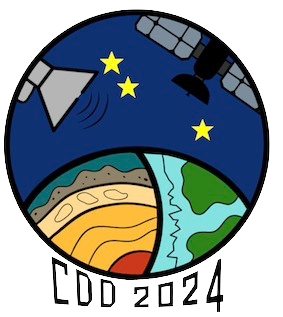Orateur
Description
With rates locally exceeding one centimeter of denudation per year [1,2], i.e., more than 100 t/ha/year, the Durance basin in the French Alps is one of the world’s most heavily eroding areas [3]. A combination of favorable conditions explains this phenomenon, including a very steep topography, sparse vegetation and a particular susceptibility of the Jurassic black marls, also called Terres Noires, to seasonal climatic forcing [4]. The Draix-Bléone observatory uses hydro- sedimentary stations to instrument several of these small, non-anthropized catchments, where hydrological responses to seasonal storms are rapid and intense [5]. The work presented combines the use of LiDAR time series from airborne, UAV and ground measurements, with sediment flux chronicles recorded at the outlet of the Laval catchment, a small steep watershed (0.86 m2), to address questions of upstream/downstream transport modalities. An assessment of the potential of remote sensing methods for attributing the contributions of each critical zone compartment (channel, gullies, landslides, etc.) to the erosive dynamics of this basin and its connectivity is carried out.
References :
[1] N. Mathys, S. Brochot, M. Meunier and D. Richard (2003). Erosion quantification in the small marly experimental catchments of Draix (Alpes de Haute Provence, France). Calibration of the ETC rainfall-runoff-erosion model. CATENA. 50(2–4):527–548. DOI : 10.1016/S0341-8162(02)00122-4.
[2] A. Carriere, C. Le Bouteiller, G. E. Tucker, S. Klotz, and M. Naaim (2020). Impact of vegetation on erosion: Insights from the calibration and test of a landscape evolution model in alpine badland catchments. Earth Surf. Process. Landf., 45(5):1085–1099. DOI : 10.1002/esp.4741.
[3] D. E. Walling (1998). Measuring sediment yield from river basins. in Soil Erosion Research Methods (R. Lal, Ed.). Soil and Water Conservation Society, Iowa, USA, pp 39–73.
[4] L. Descroix and N. Mathys (2003). Processes, spatio-temporal factors and measurements of current erosion in the French Southern Alps: A review. Earth Surf. Process. Landf. 28( 9): 993–1011. DOI : 10.1002/esp.514.
[5] Draix-Bleone Observatory. (2015). Observatoire hydrosédimentaire de montagne Draix- Bléone [Data set]. Irstea. DOI : 10.17180/obs.draix

